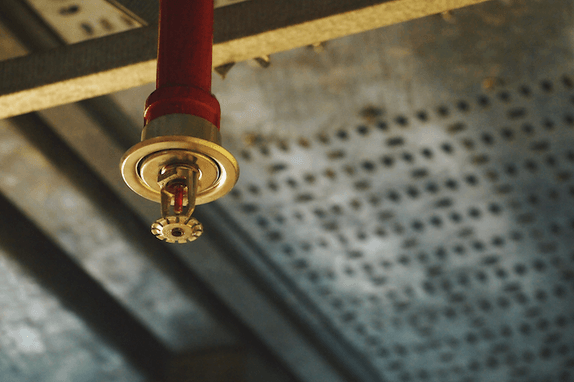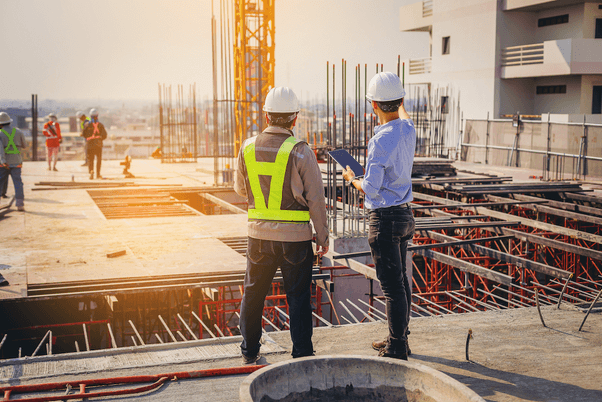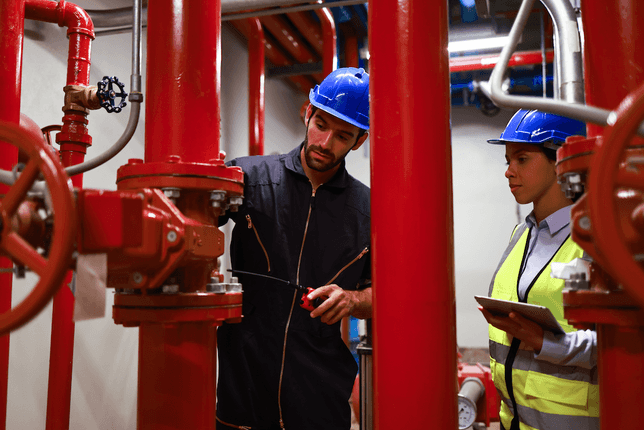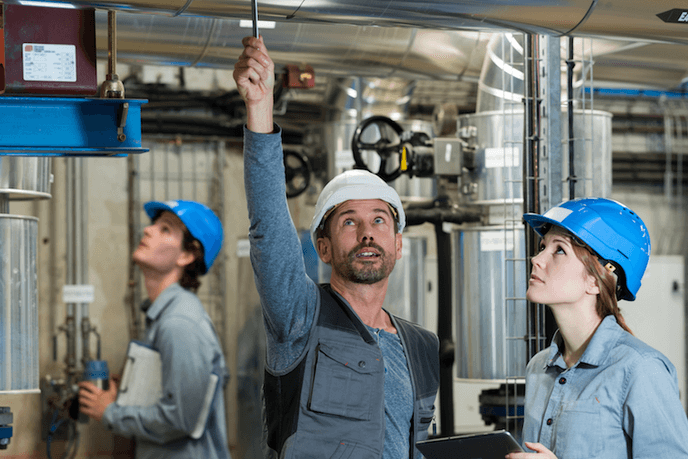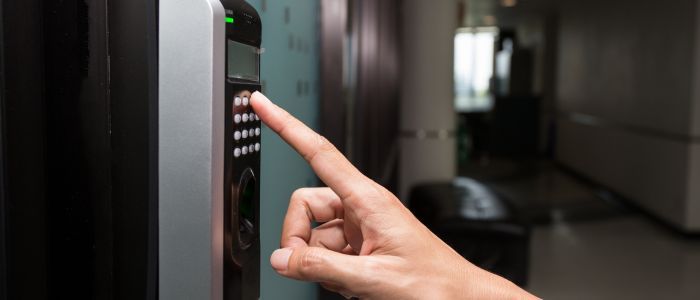Fire suppression is undeniably one of the most critical aspects of construction projects. As a security professional or buyer, it’s essential to have a deep understanding of the MasterFormat system and Division 21, which houses fire suppression systems. In this section, we’ll dive into the realm of division 21 fire suppression, unraveling its mysteries and complexities, and equipping you with the knowledge you need to make informed decisions. So, let’s dive into it!
Table of contents
- The Essence of Division 21
- The Power of CSI MasterFormat in the Construction World
- Unraveling the Mysteries of Division 21: Fire Suppression Systems
- A Deep Dive into Fire Suppression Systems
- Seamless Integration: The Key to Fire Suppression Success
- Navigating the Regulatory Maze: The Fundamentals of Fire Suppression Compliance
- Maintenance and Inspection: The Pillars of Fire Suppression System Performance
- The Future of Fire Suppression Technology
Suggested Posts:
- Introduction to CSI MasterFormat and Division 01
- Getting to Grips with CSI Division 02 – Existing Conditions in Construction Projects
- Mastering Division 09 – Finishes in the CSI MasterFormat System for Improved Project Success
The Essence of Division 21
- Division 21 is a crucial part of the Construction Specifications Institute (CSI) MasterFormat, a system used to organize construction projects.
- Focused on fire suppression, Division 21 plays a vital role in ensuring the safety and security of structures and their occupants.
- Its constituents include various types of systems such as water-based, chemical-based, and inert gas systems, all aimed at controlling and extinguishing fires.
- As a security professional, understanding Division 21 is fundamental to ensure seamless integration, compliance with regulations, and peak performance of fire suppression systems within your projects.
The Power of CSI MasterFormat in the Construction World
MasterFormat, developed by the Construction Specifications Institute (CSI), is an indispensable tool in the world of construction site specifications. Here’s why it matters:
- Organization and Communication: MasterFormat streamlines project documentation, making it easier for all parties involved to access and comprehend the details of a project. This improves communication and collaboration, ultimately driving better results.
- Standardization: This powerful system provides a standardized structure for all divisions within a project, simplifying the process of comparing bids and managing contracts.
- Efficient Decision Making: By breaking down complex projects into manageable categories, MasterFormat empowers security professionals and buyers to make informed decisions on various aspects of the construction process.
Mastering the Divisions
MasterFormat currently consists of 50 divisions, each division serving a specific purpose. A firm grasp of these divisions and specifications is essential for professionals in the industry:
- Understand the scope and requirements of a project.
- Ensure seamless coordination between different disciplines.
- Facilitate proper planning and execution. So, get ready to unlock the secrets of Division 21 and become a fire suppression expert, as we dive deeper into the fascinating world of construction technology and safety!
Unraveling the Mysteries of Division 21: Fire Suppression Systems
If we were to boil down the essence of the Division 21 fire suppression is, it would be to protect lives, property, and the environment by preventing and mitigating the destructive force of fires. Let’s break down the critical need for the 21 fire suppression systems in construction projects:
- Saving Lives: It’s an undeniable fact that fires can be catastrophic. By incorporating fire suppression systems into construction projects, we are drastically reducing the chance of fatalities and injuries caused by fires.
- Property Protection: A raging fire can cause severe structural damage and consume valuable assets. Implementing a robust fire suppression system is key to minimizing property losses and ensuring the structural integrity of buildings.
- Environmental Conservation: During a fire, toxic gases and chemicals can be released, harming the environment. A dependable fire suppression system mitigates this impact, preserving our planet. So, why is it vital for security professionals to familiarize themselves with fire suppression systems?
A Deep Dive into Fire Suppression Systems
Fire suppression systems are not created equal. Each fire suppression system comes with its unique set of features and benefits, so it’s crucial to understand the differences to make the best choice for your construction project. Let’s jump into the world of fire suppression systems and discover what’s available!
1. Water-based Systems
These are the most common and widely-used fire suppression systems:
- Sprinkler systems: A network of interconnected pipes releases water when heat-sensitive elements detect high temperatures.
- Standpipe systems: A fixed system of hoses and nozzles allows firefighters to access water quickly and easily.
2. Chemical-based Systems
Chemical-based systems often use foam or clean agents to suppress fires:
- Foam systems: They smother the fire, cooling the area and blocking oxygen.
- Clean agent systems: Fast-acting chemicals absorb heat and reduce oxygen levels to extinguish the fire without causing damage.
3. Inert Gas Systems
These fire suppression systems displace oxygen, depriving the fire of fuel:
- Argon or nitrogen gases: They cause minimal harm to the environment and are safe for occupied spaces.
Factors to Consider When Choosing a System
- Size and complexity of the project
- Occupancy and type of building
- Fire risks involved
- Budget constraints
- Local regulations and codes
Your construction journey to mastering Division 21 is incomplete without understanding the different fire suppression systems at your disposal. Armed with this knowledge, you can make informed construction decisions and ensure optimal safety in building your construction project!
Seamless Integration: The Key to Fire Suppression Success
Achieving a perfectly integrated fire suppression system within your construction project is no small feat. It requires meticulous coordination and planning, not to mention excellent teamwork between different disciplines. Let’s dive into some essential steps for ensuring seamless integration of fire suppression systems!
Align with Architectural, Structural, and Electrical Plans
- Be proactive in collaborating with other professionals such as architects, structural engineers, and electricians from the initial stages.
- Understand the overall structure and design, allowing you to identify potential obstructions or conflicts.
- Anticipate the routing of system components and ensure proper clearances are maintained.
Foster Open Communication
- Establish open lines of communication between all involved parties to encourage timely information sharing.
- Use collaborative tools, such as Building Information Modeling (BIM), to visualize system integration.
- Regularly update and revise designs, ensuring everyone is on the same page.
Don’t Overlook Maintenance and Accessibility
- Make sure that system components are easily accessible for maintenance, inspection, and repairs.
- Allocate enough space for replacement parts and equipment storage. By mastering the art of integration and coordination, you’re well on your way to maximizing safety and efficiency in your fire suppression system!
Navigating the Regulatory Maze: The Fundamentals of Fire Suppression Compliance
In the world of fire suppression systems design, regulations and compliance are the name of the game. Let’s dive into the key aspects of the regulatory landscape and understand what it takes to be a compliance-savvy security professional!
Decoding Local and International Codes
Fire suppression systems are governed by a plethora of local and international building codes and standards, such as:
- NFPA (National Fire Protection Association) standards
- IBC (International Building Code) requirements
- Local building and fire codes: These codes and standards are engineered to ensure the safety and efficacy of fire suppression systems. It’s essential for security professionals to stay up to date with these regulations to guarantee seamless project execution.
Testing and Inspection: The Path to Peak Performance
Regular testing and inspection of fire suppression systems are vital to ensure their optimal performance. Key elements include:
- Performing annual inspections: This involves a comprehensive assessment of the system’s components and functionality.
- Conducting routine tests: Regular tests, such as water flow tests and alarm tests, guarantee that the system is operational and prepared to fight fires.
Embracing Compliance for a Safer Tomorrow
Compliance with regulations isn’t just about ticking boxes; it’s about ensuring the safety and well-being of people, property, and the environment. Security professionals who prioritize compliance are laying the groundwork for building a safer tomorrow!
Maintenance and Inspection: The Pillars of Fire Suppression System Performance
Maintaining and inspecting fire suppression systems are vital to ensure they’re ready for action when needed. Let’s look at the essentials of fire suppression system design and upkeep!
Regular Maintenance Schedules
- Set a routine maintenance schedule based on manufacturer recommendations and local regulations.
- Include activities like cleaning, lubricating, and replacing worn-out components.
- Document all maintenance activities for future reference.
Identify Potential Issues
- Monitor system performance for any abnormalities or inefficiencies.
- Look out for common issues like leaks, corrosion, or alarm malfunctions.
- Implement preventative measures to avoid recurring problems.
Troubleshooting Common Problems
- Address issues promptly with a well-trained maintenance team.
- Consult manufacturer guidelines for troubleshooting and problem-solving.
- Consult professional technicians or engineers for specialized assistance when needed. By embracing a proactive approach to maintenance and inspection, you can keep your fire suppression system in tip-top shape, ensuring optimal performance and safety when it matters most!
The Future of Fire Suppression Technology
As we forge ahead into the future of division 21, fire suppression technology continues to evolve, offering innovative solutions that are poised to revolutionize the field of fire safety. Let’s take a glimpse at the cutting-edge fire suppression trends and technologies that are set to shape Division 21 in the coming years.
Smart Fire Suppression Systems
- Advanced sensors and IoT devices will enable real-time monitoring and predictive analytics for faster response and improved efficiency.
- Integration with other building automation systems such as HVAC and lighting will allow for better overall safety and resource management.
Environmentally Friendly Fire Suppression Agents
- The development of green fire suppressants will minimize the environmental impact of fire suppression efforts.
- Next-generation clean agents and biodegradable foams will reduce the use of harmful chemicals in fire suppression systems.
Advanced Suppression Techniques
- Cutting-edge technologies like water mist systems and sonic fire extinguishers will offer innovative ways of suppressing fires while minimizing water usage and potential damage. As we embrace the future of fire suppression technology, Division 21 will continue to evolve, reshaping the landscape of fire safety and ensuring a safer tomorrow for our world.
Concluding Thoughts on Division 21 and Fire Suppression Systems
As we reach the end of our in-depth analysis of Division 21, it’s clear that fire suppression systems play a vital role in ensuring the safety and well-being of building occupants, protecting valuable property, and preserving our environment. For security professionals, understanding the intricacies of fire suppression technology within the context of construction projects is crucial because:
- Streamlines the decision-making process in selecting the right system.
- Facilitates seamless integration and coordination with other disciplines.
- Ensures compliance with local and international regulations.
- Stay updated with industry developments and trends.
- Engage with experts and peers.
- Implement suitable fire suppression systems. Together, let’s make the future of construction safer for all!
Now that you’re equipped with the knowledge of Division 21, it’s time to take action. Stay informed on the latest industry developments and continue to learn from experts and peers. Be proactive in implementing fire suppression systems that best suit your projects’ needs, and foster a safer tomorrow for everyone involved.
Have Questions?
Get in touch with our team to learn more about what Swiftlane can do for you.

